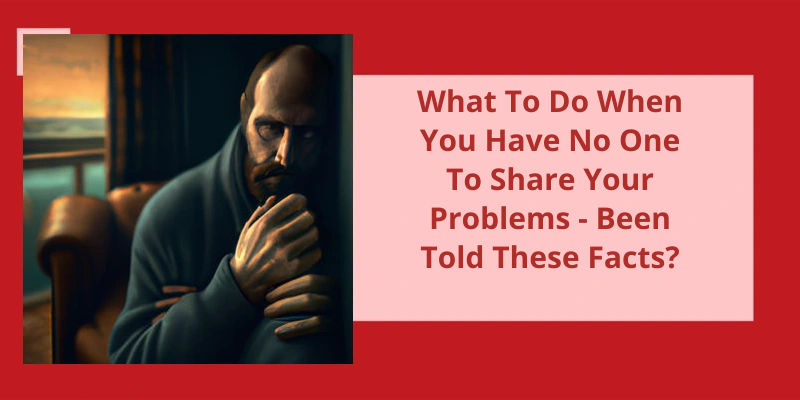As we grow older, it's natural for our bodies to undergo changes that can affect the way we look. From wrinkles and sagging skin to hair loss and weight gain, these changes can cause us to feel like we're becoming less attractive. But there are also other factors at play, such as stress, unhealthy lifestyle choices, and underlying health issues that can impact our physical appearance. It's important to remember that beauty is subjective and can come from within, but it's also crucial to take care of ourselves to maintain our confidence and self-esteem. In this article, we'll explore some of the reasons why we might feel less attractive as we age and discuss ways to boost our physical and emotional well-being.
Do You See Yourself Less Attractive Than You Actually Are?
Some people may see themselves as less attractive than they actually are due to a variety of factors. This can lead to a negative self-image and lower confidence, which can in turn affect their behavior and social interactions.
This bias is the tendency to attribute positive outcomes to ourselves and negative outcomes to external factors. In the case of attractiveness, someone with a self-serving bias may believe that their good looks are responsible for positive outcomes in their life, such as getting a job or a romantic partner.
It’s important to note that there’s no objective measure of attractiveness, as beauty is subjective and varies from culture to culture. What one person finds attractive may not be the same for another. Additionally, attractiveness isn’t just about physical appearance, but also includes personality traits, intelligence, and other non-physical characteristics.
Despite these complexities, it’s still beneficial to have a positive self-image. However, it’s important to maintain a realistic view of oneself and not become overly confident or arrogant.
However, it’s important to strive for a realistic and positive self-image for optimal mental health and well-being.
As we age, it’s natural for our bodies to change and for us to feel differently about our appearance. A recent survey has shed light on the average ages when men and women begin to feel less attractive and garner less romantic attention. Surprisingly, the survey found that women feel invisible at an earlier age than men.
What Age Does Attractiveness Decline?
The definition of attractiveness has changed through time and cultures. In some societies, attraction is linked to beauty standards that value youth, physical features, and symmetry. In others, attractiveness goes beyond physical appearance and involves personality traits, intelligence, and social skills. Nevertheless, it’s a common belief that physical attractiveness is important in social and romantic contexts. Aesthetic preferences are influenced by biological, psychological, and socio-cultural factors that shape our perceptions of beauty. For example, studies show that facial symmetry, clear skin, and healthy hair are universally appealing characteristics, while body shape and size vary across cultures.
As people age, their bodies undergo physiological changes that affect their physical appearance. Skin loses elasticity, wrinkles become more prominent, hair thins and grays, body fat redistributes, and muscle mass decreases. Therefore, it’s expected that attractiveness declines with age, at least in terms of physical beauty.
The survey mentioned above sheds light on the subjective experience of aging and attractiveness. It shows that people perceive a decline in their attractiveness around midlife, regardless of their actual appearance. At age 45 for women and 47 for men, they report receiving less attention from potential partners, feeling less confident in their appearance, and being less sexually desired. This phenomenon is known as the “invisibility” effect, which refers to how society deems older people less appealing and relevant in mainstream media, popular culture, and consumer industries.
Nevertheless, it’s important to note that this survey is limited to a specific cohort and doesn’t represent a universal truth. Personality traits, values, interests, experiences, and social connections are equally important in shaping ones appeal to others. Therefore, individuals shouldn’t necessarily base their self-worth or romantic prospects on their age or physical appearance but on their intrinsic qualities and achievements.
The Role of Gender in How Attractiveness Is Perceived and Valued
This topic explores how gender influences the way attractiveness is judged and valued. It considers factors such as societal norms, cultural expectations, and individual preferences that affect our perceptions of beauty.
The way we perceive our attractiveness is heavily influenced by social comparison. This contrast effect can create a distorted view of ourselves that might not accurately reflect reality. Let’s explore this phenomenon further and see how it impacts our self-image.
Do We See Ourselves as Uglier or More Attractive?
In a society that places such a strong emphasis on physical appearance, it’s natural to wonder how we perceive ourselves in comparison to others. A phenomenon known as the contrast effect suggests that when we compare our appearance to that of others, we tend to view ourselves as less attractive. This can lead to feelings of inadequacy and even low self-esteem.
Numerous studies have found evidence of the contrast effect in various contexts. For example, research has shown that people rate themselves as less attractive when they’re shown photos of attractive models or people who’re perceived as more physically desirable. Similarly, individuals may perceive themselves as more attractive if they’re shown less attractive stimuli.
However, the contrast effect isn’t always a negative phenomenon. It can also be used to our advantage. For example, individuals who’re looking to improve their appearance may benefit from comparing themselves to someone with a less desirable appearance. This can motivate them to work harder to achieve their desired look.
How Social Media and Beauty Standards Impact Our Perception of Our Own Appearance
Social media and beauty standards can influence how we see ourselves physically. Excessive exposure to edited images and unrealistic expectations can lead to negative self-perception and low self-esteem.
Source: Do we see ourselves prettier than we actually are?..
While good looks, ambition, and a good sense of humor are attractive qualities, there are other factors at play that determine who we find attractive. It turns out that past experiences, proximity, and biology all play a crucial role in shaping our preferences. Let’s dive deeper into what makes a person attractive and explore some surprising factors that may be influencing your dating choices.
What Makes a Person More Attractive?
One major factor that makes a person more attractive is their level of confidence. Confident individuals exude a sense of self-assurance and appear more secure in themselves and their abilities. This trait can be particularly alluring because it suggests that the person is comfortable in their own skin and likely to be less insecure or needy in a relationship.
Individuals who’re able to communicate their feelings effectively and empathize with others are often perceived as more appealing partners. This is because emotional intelligence is closely linked to the ability to understand and connect with others on a deeper level, which is a critical component of building a successful and fulfilling relationship.
Physical proximity is also a major factor that can influence attraction between individuals. When we spend time around someone on a regular basis, whether it be in school, work, or social settings, we’re more likely to develop feelings of affection and attraction towards them. This is known as the mere exposure effect, and it’s a well-documented phenomenon in psychological research.
Biological factors also play a significant role in determining who we find attractive. Research has shown that men are often more attracted to women with a waist-to-hip ratio of 0.7, which is associated with greater fertility and reproductive success. Meanwhile, women tend to prefer men with broad shoulders and a V-shaped torso, which is associated with physical strength and protection.
Finally, shared experiences and interests can also contribute to the appeal of a potential partner. When we find someone who enjoys the same activities, hobbies, or passions as we do, it can create a strong sense of connection and compatibility that can be very appealing. This is often why couples who share a love of music, art, or travel are perceived as particularly well-suited to each other.
However, societal standards and cultural norms also play a role in shaping our perceptions of beauty and attractiveness. As we delve deeper into the topic, it becomes clear that the answer to whether younger people are more attractive than older people isn’t straightforward.
Are Younger People More Attractive Than Older People?
However, attraction is subjective and can vary from person to person. What one person may find attractive in a younger person, another may find in an older person. Attraction is also influenced by cultural norms and social constructions. Society often places a higher value on youth and beauty, which can affect how people view age and attractiveness.
Furthermore, ageism can play a role in how older people are perceived in terms of attractiveness. Society often equates aging with decline and loss of value, leading to negative stereotypes and discrimination against older people. This can influence how older people view themselves and how others view them as well.
Attraction is complex and subjective, and shouldn’t be reduced to simplistic notions of age and physical appearance.
The Impact of Societal Beauty Standards on Attraction, and How They Affect People of Different Ages.
- Societal beauty standards have a significant impact on attraction
- People of different ages are affected in different ways by these standards
- Younger individuals may be more heavily influenced, as they’re still developing their own identities and sense of self
- Older individuals may be less affected, but still may feel pressure to conform to these standards
- Body image issues and low self-esteem can result from societal beauty standards, which can in turn affect social interactions and relationships
- It’s important to recognize that beauty standards are subjective and vary across cultures and time periods
It’s no secret that many of us struggle with body image issues and often judge ourselves harshly when we look in the mirror. However, a recent virtual reality study suggests that our perception of our own attractiveness might be influenced by the perspective from which we view ourselves. In fact, the study found that most people rate their bodies as more attractive when viewed from a third-person perspective. This fascinating discovery raises some interesting questions about how we see ourselves and the role that perspective plays in shaping our self-image.
Do We See Ourselves as More Attractive?
Do we see ourselves as more attractive? It’s a question that’s puzzled humans for centuries. In a recent study that utilized virtual reality technology, researchers found that people rated their own bodies as more attractive when viewed from a third-person perspective.
However, this earlier research used mirrors or photographs, whereas the new study employed VR technology. This suggests that the medium through which we view ourselves might play a key role in how we perceive our attractiveness.
But why would we perceive ourselves as more attractive when viewing ourselves from a third-person perspective? One theory is that it allows us to distance ourselves from our insecurities and self-criticism. When we view ourselves in the first-person, we’re more likely to focus on flaws or imperfections. But when we view ourselves from the outside, we’re able to see the bigger picture and perhaps recognize that our flaws aren’t as significant as we thought.
Of course, this study raises many questions, such as how much our perceptions of our own attractiveness impact our overall self-esteem and social interactions. For those struggling with body image issues, it’s important to note that a healthy self-image isnt just about seeing yourself as attractive. It also involves accepting your flaws and focusing on your strengths.
Overall, this study offers valuable insight into the complex ways that we perceive our own bodies. While it won’t provide all the answers, it’s a step towards understanding the complicated relationship that we’ve with our own appearance. And who knows, it might even influence the way we use technology to view ourselves in the future.
Conclusion
After analyzing the various factors that contribute to one's attractiveness, it becomes clear that there’s no set answer as to why an individual may be becoming less attractive. While physical changes such as aging and weight gain or loss may play a role in altering one's appearance, one's confidence, personality, and overall energy can also greatly affect how attractive they’re perceived to be. As such, it’s important to take a holistic approach to maintaining one's attractiveness, focusing on both physical upkeep and inner growth. It’s also important to remember that beauty is subjective and that societal beauty standards are constantly evolving, meaning that what’s considered attractive today may not be the same as what was considered attractive a decade ago. Ultimately, one should prioritize their own self-care and inner confidence over trying to fit into a societal ideal of what’s attractive.






